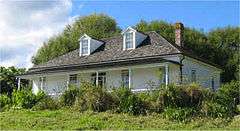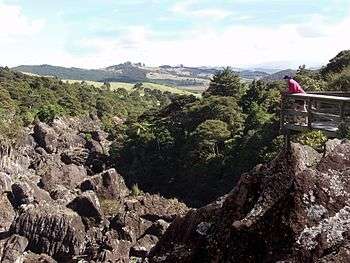Horeke
Horeke is a small isolated town on the shores of the Hokianga Harbour, in the North Island of New Zealand.
Understand
Horeke is the oldest European settlement in the Hokianga and the second oldest European settlement in New Zealand. It was very primitive early on and people lived in very simple dwellings.
Horeke was first called "Deptford", then it was renamed "The Horeke', meaning "The Throwing of a Spear". Now it is just called Horeke. It was the first centre of timber trading in the Hokianga followed by Kohukohu.
Get in
By car
From State Highway 1 (SH 1), turn into Rangiahua Road in Rangiahua, and follow the signs south-west for 10 km on a sealed road.
From State Highway 12 (SH 12) in Taheke (between Kaikohe and Waima Valley), turn into Taheke Road and drive north. There is a 9 km unsealed section of road between Taheke and Horeke.
By boat
You can land at the Horeke wharf.
Get around


Drive to the Wairere Boulders, about 4 km away. You can walk to the Mangungu Mission House on the unsealed road along the shore of the harbour.
See
- Mangungu Mission House, Motukiore Road (3 km west of Horeke, along the shore), ☎ +64 9 401-9624. Nov-Apr: Sa Su noon-4PM; May-Oct: Su noon-4PM; summer & Easter school holidays: Th-M noon-4PM; closed 25 Dec. A Wesleyan mission built during 1838-39 and overlooking the harbour. The largest signing of the Treaty of Waitangi took place here on 12 Feb 1840. To local Maori, this place is more important than the treaty site at Waitangi where the English representatives signed the document. The mission station displays the table on which the treaty was signed, with a copy of the treaty on it. There are many historic photos and objects on display. There is also a chapel. $7.
- Wairere Boulders, 70 McDonnell Rd (4 km south of Horeke, towards Taheke), ☎ +64 9 401-9935, e-mail: admin@wairereboulders.co.nz. One of New Zealand's prime geological features, which can be visited all year round. Huge basalt boulders — up to 30 m in height — created a boulder area that is 1.6 km long and up to 350 m wide. It is unique in the world. A narrow footpath leads over wooden bridges and stairs up to a platform which enables a view over the valley. The short visit takes about 40 to 60 minutes, the easy walk to the platform is about 2 hr return. $15 adult.
Horeke has interesting places you can see in a short stroll.
- Plaque marking the first commercial ship-building yard. In the middle of town, see where the first ships were built in New Zealand.
- Buildings on stilts over the harbour. View buildings erected over the water due to shortage of land for purchase.
- First New Zealand execution. Get informed and look at Ruapapaka Island where the first legal execution in New Zealand took place in 1838.
Do
Buy
There are no shops.
Eat
Drink
You can buy a beer in the pub and have a chat with the locals.
Sleep
- Horeke Hotel, Horeke Rd (in middle of town beside wharf), ☎ +64 9 401-9133, fax: +64 9 401-9916, e-mail: horeketavern.hotel@gmail.com. Oldest hotel and pub in New Zealand, serving beer since 1826.
- Riverhead Guesthouse, 2097 Horeke Rd (well visible blue house on top of the hill), ☎ +64 9 401-9610, fax: +64 9 401-9610, e-mail: riverhead.horeke@gmail.com. An ancient kauri villa which has been lovingly restored.
Go next
From Horeke you can explore the rest of the Hokianga.
- Koutu Boulders — biggest concretions in the world
- Sand dunes — fantastic sandstone sculptures on top of dune opposite Opononi
- Omahuta Kauri Sanctuary near Mangamuka Bridge
- Tane Mahuta (well signposted on State Highway 12, 18 km from Omapere towards south). The most visited kauri tree in NZ
- Kohukohu - historic town, drive to SH 1 and turn north towards Kaitaia, then in Mangamuka Bridge turn left and follow road signs to Kohukohu (60 km)
- Waima Valley
- Bay of Islands – towns of Kerikeri and Paihia. Drive to State Highway 1 and then turn right towards Okaihau, drive to Kerikeri is 45 min, to Paihia 60 min.